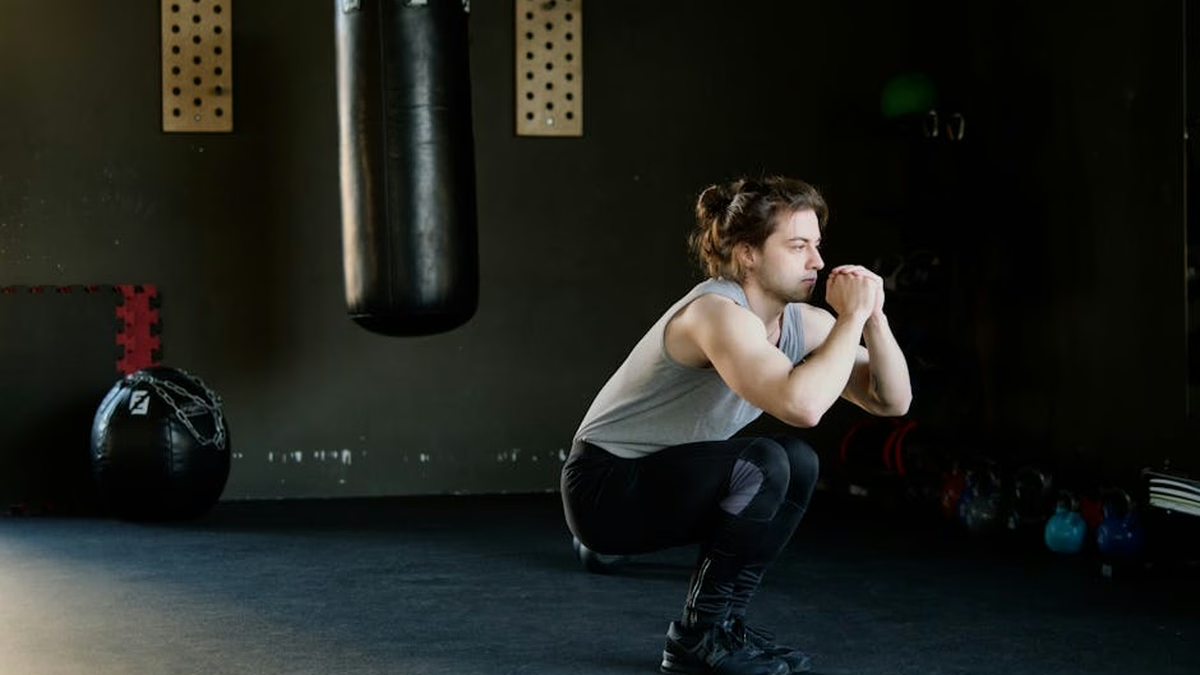Indoor HIIT: Cold Weather Workouts
Embrace the Burn: Indoor HIIT for Winter Fitness
Winter’s chill can make even the most dedicated fitness enthusiasts want to hibernate. The allure of a warm blanket and a cozy couch often outweighs the motivation to brave the cold for a workout. But what if you could get a killer workout without stepping foot outside? Enter High-Intensity Interval Training (HIIT). This powerful training method is perfect for staying in shape during the colder months, offering a fast, effective, and adaptable workout that can be done entirely indoors.
This guide will provide you with everything you need to know to kickstart your Indoor HIIT Workout routine, including the science behind its effectiveness, sample workouts, safety tips, and answers to common questions. Say goodbye to winter sluggishness and hello to a fitter, healthier you!
Understanding HIIT: The Science of Short Bursts
HIIT involves short bursts of intense exercise alternated with brief recovery periods. This method pushes your body to its limits in a short amount of time, resulting in significant calorie burn and improved cardiovascular health. But why is it so effective?
What is HIIT and why is it effective?
At its core, HIIT works by creating an oxygen deficit in your body. This forces your body to work harder to recover during the rest periods, leading to what’s known as the “afterburn effect” or Excess Post-exercise Oxygen Consumption (EPOC). This means you continue to burn calories even after your workout is finished. Studies have shown that HIIT can be more effective than traditional cardio for burning fat and improving insulin sensitivity. A study published in the Journal of Obesity found that HIIT resulted in greater fat loss than steady-state cardio in overweight individuals.
Beyond fat loss, HIIT also offers several other benefits:
- Improved cardiovascular health
- Increased muscle mass (especially when combined with resistance exercises)
- Enhanced insulin sensitivity
- Greater efficiency (shorter workouts, bigger results)
Your Indoor HIIT Arsenal: No Equipment Needed
One of the best things about HIIT is its adaptability. You don’t need fancy equipment or a gym membership to get a great workout. Many effective Indoor HIIT Workout routines can be performed using just your body weight.
What are some good indoor HIIT exercises?
Here are some examples of exercises you can incorporate into your Winter HIIT Routine:
- Bodyweight Squats: A fundamental exercise that works your quads, glutes, and hamstrings.
- Push-ups: A classic upper body exercise that targets your chest, shoulders, and triceps.
- Lunges: A great exercise for building leg strength and improving balance.
- Jumping Jacks: A simple yet effective cardio exercise that gets your heart rate up.
- Burpees: A full-body exercise that combines a squat, push-up, and jump.
- High Knees: A cardio exercise that involves bringing your knees up to your chest.
- Mountain Climbers: A dynamic exercise that works your core and shoulders.
- Plank: An isometric exercise that strengthens your core.
Crafting Your Winter HIIT Routine: Sample Workouts
Now that you know some effective HIIT exercises, let’s put them together into a sample workout. Remember to adjust the intensity and duration to match your fitness level.
Beginner HIIT Workout (15 minutes)
- Warm-up (5 minutes): Light cardio, dynamic stretching
- Workout (5 minutes):
- Jumping Jacks (30 seconds)
- Rest (30 seconds)
- Bodyweight Squats (30 seconds)
- Rest (30 seconds)
- Push-ups (30 seconds)
- Rest (30 seconds)
- Lunges (alternating legs, 30 seconds)
- Rest (30 seconds)
- Repeat the workout circuit once.
- Cool-down (5 minutes): Static stretching
Intermediate HIIT Workout (20 minutes)
- Warm-up (5 minutes): Light cardio, dynamic stretching
- Workout (10 minutes):
- Burpees (40 seconds)
- Rest (20 seconds)
- High Knees (40 seconds)
- Rest (20 seconds)
- Mountain Climbers (40 seconds)
- Rest (20 seconds)
- Plank (40 seconds)
- Rest (20 seconds)
- Repeat the workout circuit once.
- Cool-down (5 minutes): Static stretching
These are just examples, feel free to mix and match exercises to create a workout that you enjoy and that challenges you. For example, you could add some dumbbell exercises for an extra strength boost. The key is to keep the intensity high during the work intervals.
HIIT Frequency and Safety: Listen to Your Body
While HIIT is incredibly effective, it’s important to approach it with caution, especially if you’re new to exercise. Overtraining can lead to injury and burnout. Proper form and adequate rest are crucial. Outdoor Workouts for Crisp Autumn Days: Hiking & T…
How often should I do HIIT workouts?
For most people, 2-3 HIIT workouts per week is a good starting point. Allow for at least one day of rest between workouts to allow your body to recover. You can gradually increase the frequency as you get fitter. Remember to listen to your body and adjust the intensity and duration of your workouts as needed.
Is HIIT safe for beginners?
Yes, HIIT can be safe for beginners, but it’s important to start slowly and gradually increase the intensity. Modify exercises as needed to accommodate your fitness level. For example, you can do push-ups on your knees instead of your toes. It’s also a good idea to consult with a doctor or physical therapist before starting any new exercise program, especially if you have any underlying health conditions.
Do I need any equipment for indoor HIIT?
Generally, no! One of the beauties of HIIT is that many routines require minimal or no equipment. However, you can certainly incorporate equipment to add variety and challenge. Here are a few options:
- Jump Rope: A great cardio tool that can be easily incorporated into HIIT workouts.
- Dumbbells: Add resistance to exercises like squats, lunges, and rows.
- Resistance Bands: Versatile and portable, resistance bands can be used for a variety of exercises.
- Kettlebell: A great tool for full-body exercises like swings and squats.
Staying Motivated: Tips for a Successful Winter HIIT Journey
Staying motivated during the winter months can be challenging. Here are a few tips to help you stick to your Cold Weather HIIT routine:
- Set realistic goals: Don’t try to do too much too soon. Start with shorter workouts and gradually increase the intensity and duration.
- Find a workout buddy: Exercising with a friend can help you stay motivated and accountable.
- Create a workout playlist: Music can be a powerful motivator. Choose upbeat songs that will get you pumped up.
- Reward yourself: Treat yourself to something you enjoy after completing a workout, such as a relaxing bath or a healthy snack.
- Track your progress: Seeing how far you’ve come can be a great motivator. Use a fitness tracker or simply keep a workout journal.
Conclusion: Embrace the Power of Indoor HIIT
Don’t let the cold weather derail your fitness goals. Indoor HIIT Workouts offer a convenient, effective, and adaptable way to stay in shape during the winter months. By understanding the science behind HIIT, crafting effective routines, and prioritizing safety, you can achieve your fitness goals and embrace a healthier, happier you. So, ditch the winter blues and embrace the burn! Your Winter HIIT Routine awaits.
Frequently Asked Questions
Q1: What is HIIT and why is it effective?
This important question is covered in detail in the sections above. Review the related content for comprehensive answers.
Q2: What are some good indoor HIIT exercises?
This important question is covered in detail in the sections above. Review the related content for comprehensive answers.
Active Recovery Strategies: Helping Your Body Rebu…
Q3: How often should I do HIIT workouts?
This important question is covered in detail in the sections above. Review the related content for comprehensive answers.
Q4: Is HIIT safe for beginners?
This important question is covered in detail in the sections above. Review the related content for comprehensive answers.
Q5: Do I need any equipment for indoor HIIT?
This important question is covered in detail in the sections above. Review the related content for comprehensive answers.
References & Further Reading
For more information about High-Intensity Interval Training (HIIT) for Cold Weather: Indoor Workout Routines, consider these authoritative sources:
-
Harvard Staying Active Guide
Research-based physical activity recommendations.
Source: harvard.edu -
CDC Physical Activity
Government physical activity guidelines for all ages.
Source: cdc.gov -
American Heart Association Fitness
Cardiovascular health and exercise recommendations.
Source: heart.org
These external resources provide additional scientific and medical insights.






